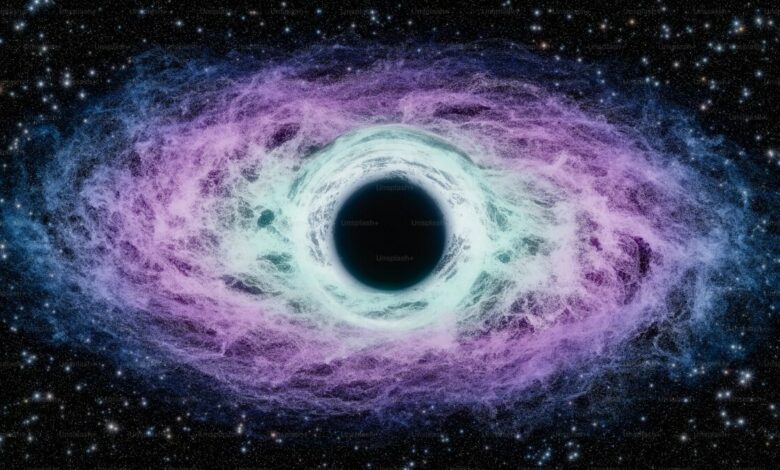JWST finds gigantic black hole with half the mass of the surrounding galaxy

A team of astronomers has made a major discovery by identifying an unusually large black hole in one of the universe’s most distant quasars. This black hole, at the heart of the quasar ULAS J1120+0641 in the constellation Leo, is 1.4 billion times the mass of the Sun. In a surprising twist, it is almost half the mass of all the stars in its galaxy combined – an unusually high ratio that far exceeds typical mass ratios of a black hole to a star.
Groundbreaking observations with the James Webb telescope
Previous attempts to observe this quasar’s host galaxy using the Hubble Space Telescope were unsuccessful due to the quasar’s overwhelming brightness. However, scientists led by MIT astronomer Minghao Yue turned to the James Webb Space Telescope (JWST), which specializes in infrared observations, to capture detailed images of this distant quasar and its host galaxy.
Yue explains that the quasar’s immense brightness (100 times that of its host galaxy) makes it difficult to measure the light from surrounding stars. Nevertheless, because the quasar’s light has traveled about 13 billion years to reach Earth, the expansion of the universe has stretched this light into infrared wavelengths, allowing clearer observations with JWST.
An unprecedented ratio between the mass of black holes and the mass of galaxies
The black hole’s mass is not unexpected; previous estimates were in a similar range. What’s striking is the mass ratio: while in typical galaxies central black holes make up only about 0.1 percent of the galaxy’s stellar mass, ULAS J1120+0641’s black hole accounts for an astonishing 54 percent. According to Yue, this finding suggests a unique evolutionary relationship between early black holes and their host galaxies, which differs significantly from the way black holes and galaxies evolve in the current universe.
Astronomer Avi Loeb of Harvard University, who was not involved in the studyargues that the black hole’s intense radiation could suppress star formation in its galaxy. In order to form stars, interstellar gas must cool to effectively collapse; However, the quasar’s energy likely heats the gas, preventing it from forming new stars. Loeb suggests that when the quasar eventually “switches off,” the galaxy’s gas will cool, leading to an increase in stellar mass and possibly lowering the black hole’s proportional mass over time.
A glimpse into the mysteries of the early universe
While the study doesn’t fully explain why some black holes in the early universe grew so quickly, the observations reveal an interesting detail: a second galaxy is merging with the quasar’s host. This galactic collision likely feeds additional gas into the black hole, increasing its mass and fueling the quasar’s brightness, making it visible over such a vast cosmic distance.




